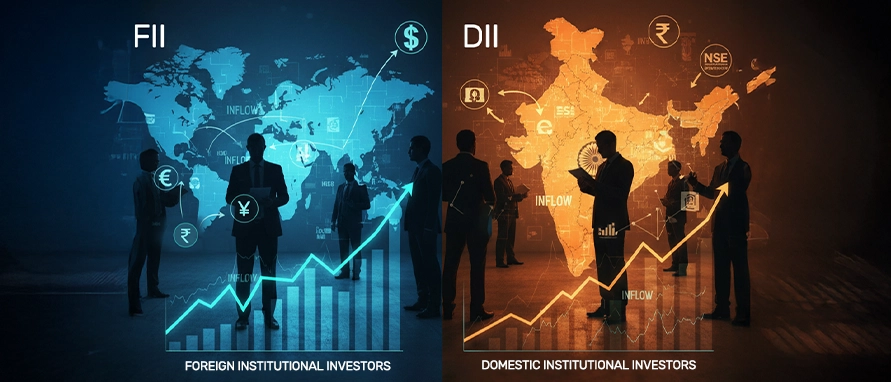Foreign Institutional Investors (FIIs) and Domestic Institutional Investors (DIIs) play a critical role in shaping market trends because of the large capital they deploy. Their buying or selling activity impacts liquidity, volatility, currency movement, and overall market sentiment. Their impact can be observed in multiple ways, such as:
Market Liquidity
When FIIs invest heavily, liquidity in the market increases as more funds flow into equities. This higher participation often drives stock prices upward and can boost market depth, making it easier for investors to enter and exit positions. On the other hand, significant FII outflows reduce liquidity, sometimes triggering market corrections or sharp declines, particularly in stocks with lower trading volumes.
Volatility and Trends
Institutional activity strongly influences price trends. Sudden or large-scale FII selling can cause market volatility, especially in large-cap and index-heavy stocks that form the core of their portfolios. DIIs, such as mutual funds and insurance companies, often step in as stabilising forces. Their buying during FII sell-offs can cushion the market and prevent steeper declines, helping indices maintain relative stability.
Currency Movements
FII activity directly impacts the foreign exchange market. Substantial inflows increase the demand for the Indian Rupee, strengthening its value against other currencies. Conversely, heavy outflows can put pressure on the rupee, leading to depreciation. DII transactions are domestic and typically do not influence currency movements in the same way, making FII activity a key factor for forex sensitivity.
Market Sentiment
Institutional flows also shape investor psychology. Consistent FII buying signals confidence in India’s economic growth, encouraging retail investors to participate more actively. Prolonged or heavy FII selling, however, can trigger fear and hesitation among small investors, sometimes causing market weakness even if the domestic fundamentals remain sound.




.jpeg)






.jpeg)



























